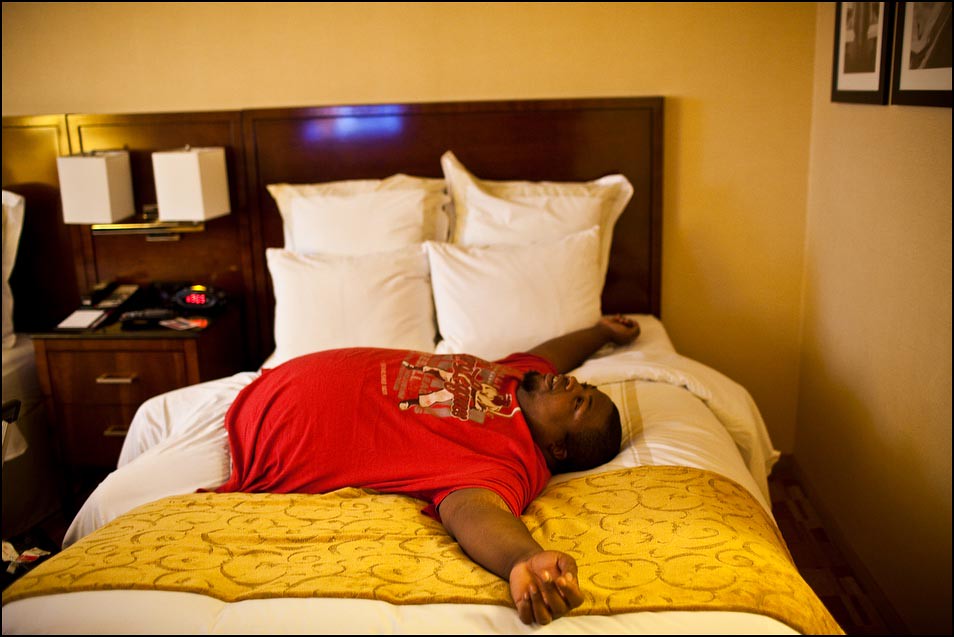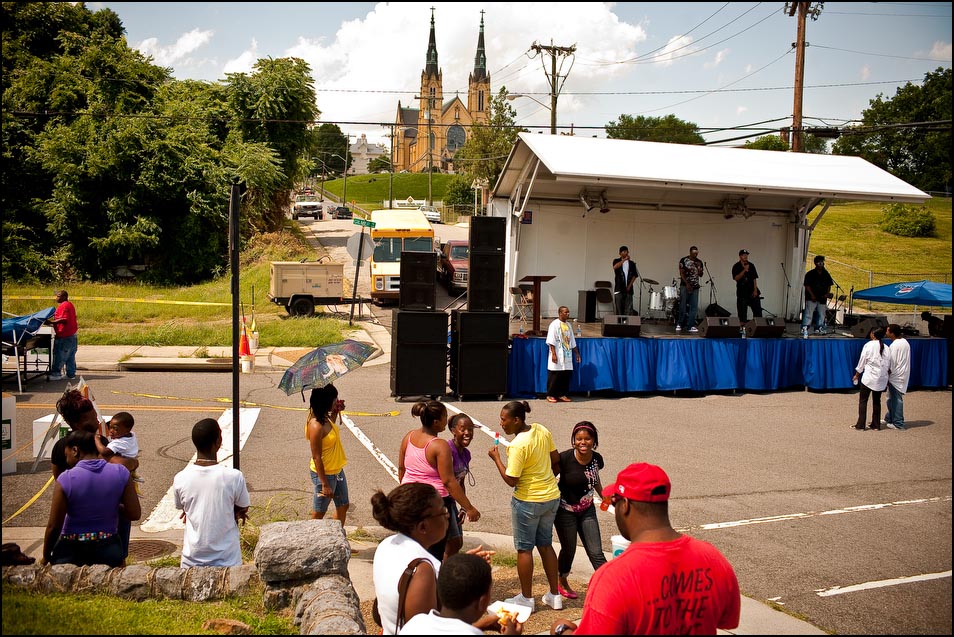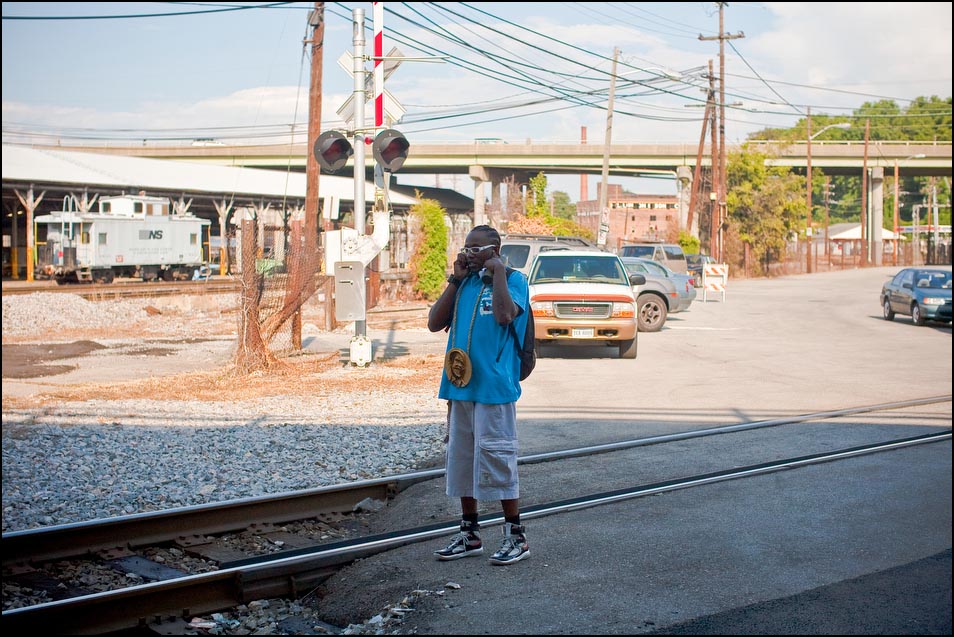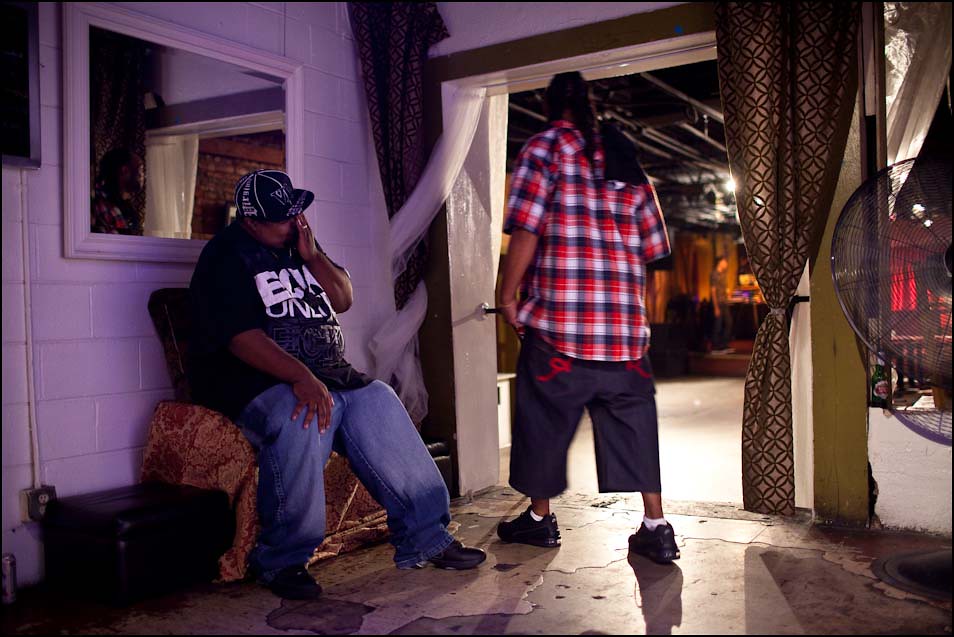Spotlight on Jared Soares
Jul 5, 2012
Originally published September 2012

TID:
This is an interesting image. Why did you choose this one to deconstruct, and can you tell us a little bit of the background of the image?
JARED:
Many thanks for inviting me to be a part of this project. The Image, Deconstructed serves as a hub for both learning and inspiration. Hopefully, I can hold up my end of the bargain and add to the wealth of knowledge that is already on the site.
Last summer I hopped on a couple tour dates with a rapper from Salem, Virginia named Poe Mack. My reasoning for tagging along was to convey how life on the road feels for an unsigned musician. Poe is the epitome of DIY (do it yourself), he handles everything and anything imaginable that could be associated with his career as a musician. He booked all the dates for the tour and handled logistics for the other artists who were involved as well.
For this tour stop in late July, Poe had to roll solo because his DJ could not find a sitter for his son. So it would be me and Poe on an 8 hour drive from Salem, Virginia to Atlanta, Georgia. I chose this photograph because it represents a side of a musician's life that isn’t seen too often. It’s an image that speaks to all the other responsibilities and variables that he has to contend with before he can even think about music. He just spent an entire day in his car and now he only has an hour or so to change and get his mind in performance mode. But, before he does that, he has to soundcheck and make sure the other artists have found the venue and their hotels. On a bed in College Park, Georgia, he steals a quick break.
TID:
This is part of a larger project as you've mentioned. Can you talk about why you were working on this project?

JARED:
Even though I do not play an instrument or sing, music makes up a large part of my life. I grew up listening to hip-hop and have fond memories of begging my mom to buy me a Naughty by Nature tape at K-Mart back in ‘93. I had heard Hip Hop Hooray on the radio and I needed their album Nineteen Naughty Three blasting in my Walkman. Then after Naughty by Nature, it was Snoop Doggy Dogg and then Notorious B.I.G. and the list keeps on going on. Since I grew up in the suburbs, I didn’t connect with most of the lyrics, but I gravitated to this idea of having something to say, having an idea that the world needed to hear.
As a young photographer I was fortunate to have amazing and generous mentors. One of the pieces of advice that I hold very dearly is that a photographer needs to work on personal projects, bodies of work that they initiate on their own.
This project began out of a need to document a portion of a community that I felt was under-reported. The way I wanted to convey this emotional narrative about Northwest Roanoke, Virginia was through hip-hop. By photographing the elements that made up the hip-hop culture, I started to see themes that related to family and community in both music and life. The overlap in music and family life created a patchwork that would hopefully give viewers an unexpected look at a community and a culture that they might not be able to enter on their own.

TID:
What challenges did you encounter while working on the project?
JARED:
Access is always an issue, especially if you aren’t from the place. Mix in a camera and locals become even more suspicious. In this section of Roanoke, cameras typically show up for crime and high school sports. Additionally, finding out how to get a hold of the rappers was a difficult task.

TID:
How did you handle and overcome these problems?
JARED:
Time was really my best friend on this project. I wasn’t operating on a deadline. There wasn’t a need to rush. Additionally, my knowledge of Northwest Roanoke wasn’t too great so I was eager to listen and learn from anyone who would talk to me. For the first month or so, I didn’t make a single frame. The camera stayed in the bag or even the trunk. I would typically just cruise the neighborhoods at different parts of the day either in a car or on foot, trying to talk to people who were outside. From walking around, I found the neighborhood corner stores, which sold CDs by local rappers. I ended up buying a couple and just calling the phone numbers on the cover art. The only person that picked up was Terrence Palmer, who was designing the album covers. I told him about the project and my intentions and he asked if we could meet in person that same day. At the beginning, Terrence was suspicious because of past experiences and the possibility that I might be trying to exploit the community. I reassured him that that was not the case and over the course of about a month I would come back to Terrence's office and just chat about life and music.
During these conversations, I was learning which issues were of importance to this community. Soon enough he began to introduce me to other rappers and then the photography part of the project began. And since Roanoke is fairly small, others in the community heard about my project and wanted to talk to me about it. So the four weeks of not shooting and just listening really paid off.
TID:
What was the turning point in your ability to gain access? How did it change things for you?
JARED:
I'm not sure there was a specific turning point with regard to my access improving during the project. My approach to gaining trust was very slow. Each person I met I tried to invest the time to learn from; I felt their words would lead me to the photos that I needed to make in order for this project to go beyond the surface.

TID:
Now onto the moment. Can you talk about the moments leading up to the picture?
JARED:
The most time I had spent with Poe Mack was probably two hours maximum and there were other people around. This trip was really the first time I had photographed him by himself. His DJ was supposed to travel with him and I was excited about the possibility of interaction between the two but that didn't work out.
One of the perks of an 8 hour car ride is that you really get to know the other person. Poe and I knew each other in passing but really got to know each other on the road. We connected on the idea of treating our art like a craft and the work that goes into refining it. This was something we talked about quite a bit on the drive, in between listening to his past music and logistics for the night's performance.
We ended up hitting rush hour in Atlanta and there was difficulty finding the hotel. I could sense there was some tension because he was wondering if he should just go straight to the venue. Once we were able to figure out where the hotel was, he estimated that he'd have enough time to change and get ready for the show and possibly squeeze in some rest -- not a lot though.

TID:
What surprised you about the moment?
JARED:
I didn't think he was going to crash out on the bed immediately after walking into his hotel room. In my mind, I figured he was going to get straight to business with tasks related to preparing for his performance. I knew he was tired from the drive because we kept talking about it but I thought he was just going to power through the fatigue.
TID:
What have you learned about yourself in the making of this project?
JARED:
In addition to reinforcing my belief in the value of time investment and relationships with the people that you are photographing, this project has taught me a number of lessons related to communication.
While working on this project I had to confront a number of questions not only from subjects but also from myself. I realized that it was important for me to explain to myself and to these strangers (who would later become friends) the purpose of making these photographs. This was a self-initiated project and at the time I hadn't secured an outlet to publish these photographs, which meant I didn't have the luxury of leaning on an organization for credibility. I found that once I was secure with my purpose and able to answer the question of why I was doing this project then it was easier to approach people.
Learning how to the to convey my intentions helped me build relationships and move the project beyond the surface. Additionally, this skill came in handy when talking about the project to editors and curators.
Now when I want to start to any type of personal work, I spend a lot of time trying to figure out my intentions and the purpose of the project. Once I have answers that I'm secure with, then I start engaging with people. It can be a very slow process and sometimes frustrating because you feel like you're missing pictures but the end result will be more fruitful -- both photographically and personally.

TID:
We asked you to pick an image from this project to deconstruct, and you chose this one. Why did you choose this over all the others?
JARED:
In a way, the image of Poe Mack laid on the hotel bed is a self portrait. He's tired but you can tell he's enjoying the experience. I worked on this project for a significant amount of time and there were times that I was completely spent, but I was still enjoying the experience of this journey.
I didn't realize it at the time I was making this image, but this project is a lot about offering the audience a different perspective, one that often surprises them and hopefully stimulates a change in thought. For the most part, hip-hop culture is seen in a negative light by the mainstream. I'm not trying to point fingers or blame anybody for those opinions. My intention was to use an emotional narrative as a vehicle to present hip-hop in a way that those outside of the culture could relate to it. Most audiences won't be able to connect with the image of a larger than life figure performing to a crowd of thousands but they understand family issues and the emotions that come with chasing a dream.

TID:
In conclusion, what advice do you have for photographers?
JARED:
Be patient. Be respectful. Be sure to listen. The whole process is a marathon not a sprint. Enjoy it. Photograph the people in your projects like they are your family.
:::BIO:::
Jared Soares is an independent documentary photographer based in Washington, DC and Virginia. He divides his time between documenting social issues in Martinsville, Virginia and client commissions. From 2006-2010 he worked as a staff photojournalist at The Roanoke (Va.) Times. He has also worked as an assistant in the Paris office of VII Photo Agency.
His small-town hip-hop culture project, On The Block, has been published by The New York Times' Lens Blog, SPIN and recently exhibited during Look3 Festival of the Photograph at The Bridge PAI in Charlottesville, Virginia.
To see more work go here: http://www.jaredsoares.com/